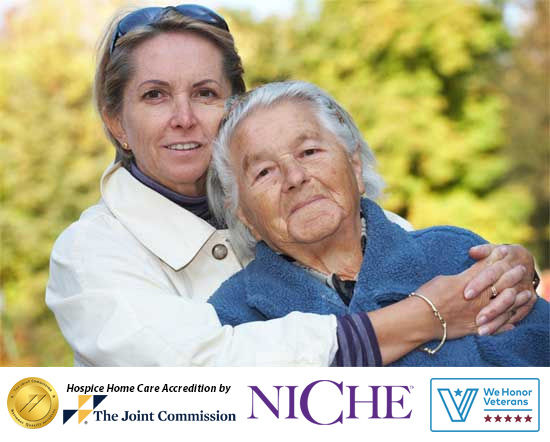by Rachel Stackhouse, TRU Clinical Educator
There’s a concept I’ve been rolling over and over in my mind lately that will be of interest to caregivers and healthcare workers. It’s the idea of engaging compassion over empathy to prevent burnout. I’d like to present you with what I know on the topic, and then allow you to decide for yourself when to tap into compassion over empathy. This idea was first presented to me in an article from Vital Hearts, a local training initiative dedicated to caring for healthcare professionals 1. These are experts in helping health professionals overcome vicarious trauma and compassion fatigue. Their world revolves around ensuring that health workers have the tools they need to process traumatic situations to allow an effective and healthy person.
When we think of trauma, often we think of “big T” traumas: abuse, car crashes, natural disasters. A relatively low proportion of the population ever experiences those things. On the flip side, when I refer to trauma here, I’m talking more of the “little t” traumas: the family who suddenly lost their matriarch, the patient who came for a hip replacement and ended up in cardiac arrest, the sudden diagnosis of a chronic illness, the disease no doctor can nail down a diagnosis for. These are the traumas that weave into many lives, and they are the things we see in healthcare every day. The frequency of these “little t” traumas are why we need to be aware of how we show up to serve our patients, and where empathy vs compassion comes in. Because we are exposed daily to human suffering, to the unfair nature of the world, and to the way bodies can betray us, it is worth considering how to balance the emotional load. It’s a balance between protecting our own hearts, while simultaneously opening the heart enough to provide meaningful care and connection. If you’re not a healthcare worker but a caregiver to your loved one, this topic will help you learn how to tend to your heart in your caregiving role.
This is a massive topic; one for which much more could be said about self-care, boundaries, and the like. But for right now let’s get an understanding of the difference between compassion and empathy. Some synonyms for compassion are understanding, care, concern, mercy, kindness, humanity 2. It’s specifically being aware of another’s distress with a desire to resolve it. Some synonyms for empathy are understanding of, feeling for, identification with. It’s specifically the ability to take on the feelings of another. To do that, you must connect with something in you that knows how the other person is feeling. When I connect to someone with compassion it motivates me to alleviate the distress, but I remain within my own emotions. Conversely, when I connect to someone with empathy, I take off my prior emotion to put on theirs. My body experiences the weight of anxiety in my chest, or the tension of my muscles in anticipation of pain, perhaps. Now imagine doing this multiple times a day with every patient encounter you have. If we approach our work consistently form empathy, burnout is highly likely. We each need to take an honest look at our default settings when working with those in our care to identify the impact this work is having on us. Working from compassion rather than empathy helps us to protect our own bodies and our own emotions so that we can remain good, effective people.
The US Surgeon General has a 76-page document titled, “Addressing Health Worker Burnout” written in 2022. The document explores what various entities – healthcare employers, federal and local governments, health insurers, tech companies, communities, family members, and the individual health worker- can do to address the problem. In an opening line, the document reads, “even before the COVID-19 pandemic, the National Academy of Medicine found that burnout had reached ‘crisis levels’ among the U.S. health workforce, with 35-54% of nurses and physicians and 45-60% of medical students and residents reporting symptoms of burnout.” 3
While I’d urge you to follow the citation below and read parts of the document for yourself, I want to highlight what they recommend for the individual health worker. Recognizing signs of distress and burnout in yourself and your colleagues, using “psychological PPE,” and adding healthy rituals to your day are among their recommendations. Such rituals can be as simple as pausing in your car after leaving a visit to actively realize how the visit impacted you or asking yourself “what do I feel, and what do I need?” It is so easy to stuff down the emotions to push forward to the next task, but if this is all the attention you give to the emotion, you’re simply stuffing things away to create a mess to work though later.
Another strategy is to stay connected and reach out for help. This one is especially important in care settings like TRU, as most of our care professionals are highly autonomous in the field, rarely having face-to-face interaction with other colleagues. This point highlights the need to lean on your team members and speak up on days when you’re feeling particularly burnt out. That’s how your team will know to give you some added support. A 10-minute call to your team chaplain or a fellow nurse can sure make a huge difference when feeling burdened.
Another is to prioritize moments of joy and connection. I love this one because it gives you permission to add joy into your day! When working with new-hires, I often recount my ritual of adding joy by creating my own “Toffee Tuesday.” I had a patient who was particularly challenging, and she lived close to my favorite drive-through coffee kiosk. Since I often ordered a toffee drink and saw this patient (at least) every Tuesday, I created a weekly celebration that added very little to my day yet created a spark of joy for me. Those are the moments no one can create for you; you must value your joy enough to prioritize it.
The next intervention listed is to get back to basics with good health habits. Do you have to park and walk into a patient’s home/ facility? Do yourself a favor, and park further away or take the stairs to get your body moving. Bring a healthy lunch and nourish yourself every 3-4 hours, even if it is while you’re texting and driving. (Seriously though, be safe). The last intervention listed is to use your voice to advocate for positive changes in your workplace and community. This one feels particularly hard when you’re already feeling burnt out, but the truth is, if you’re feeling burnt out there are definitely others who have been there and can connect with you to innovate positive change.
I connected with two experienced TRU nurses, Sandee (15 years) and Becky (21 years). They emphasize the importance of embracing change for longevity in this field. According to Becky, “There are constant changes within the organization, the healthcare industry, and patient and family expectations. Knowing and accepting that change is coming and will keep coming increases motivation to stay on. Recognizing the unique opportunity, we have to care for people at such a final point in a human’s existence is precious. I was explaining to my son that hospice nurses are called to this work just like chaplains and pastors.”
Sandee echoes Becky’s sentiments, emphasizing the need to avoid seeking constant comfort: “We, like our patients, must learn that life is uncertain, death is uncertain, and we have no control. We just look to find comfort in the present moments. I couldn’t agree more that this work is special and a calling. It teaches us that life is fragile – we only have today, and we do the best we can and learn from every one of our patients, families, and disease processes with compassion for ourselves to make mistakes and be honest with ourselves and families.”
Sandee adds a touch of joy to her approach, using humor to help both herself and families navigate distress. By demonstrating comfort in challenging situations, she helps families realize they are not alone in their suffering. Sandee’s ability to maintain composure in distress highlights her internal work of using compassion for motivation and employing psychological PPE to create rituals that enable her to be fully present with families.
While there are things that can be done at a systems level to improve burnout, much of the onus is on the individual health worker to advocate for yourself. I whole-heartedly believe there are moments when empathy is required or automatically generated, and I am challenging you to consider finding a rhythm for compassion in your practice, donning and doffing psychological PPE as needed. This is such a subtle shift in mindset, but I believe it will add an interesting level of self-awareness to your work today.
Further reading on how your body interprets emotions:
The Body Keeps the Score by Bessel van der Kolk
The Wisdom of Your Body by Hilary McBride
Waking the Tiger by Peter Levine
References:
- What we do: Vitalhearts® the resiliency training initiative: Colorado, USA. VitalHearts. (n.d.). https://www.vitalhearts.org/what-we-do
- Merriam-Webster. (n.d.). Compassion definition & meaning. Merriam-Webster. https://www.merriam-webster.com/dictionary/compassion
- Addressing health worker burnout -The U.S. Surgeon General’s Advisory on Building a Thriving Health Workforce. Addressing Health Worker Burnout. (2022). https://www.hhs.gov/sites/default/files/health-worker-wellbeing-advisory.pdf

